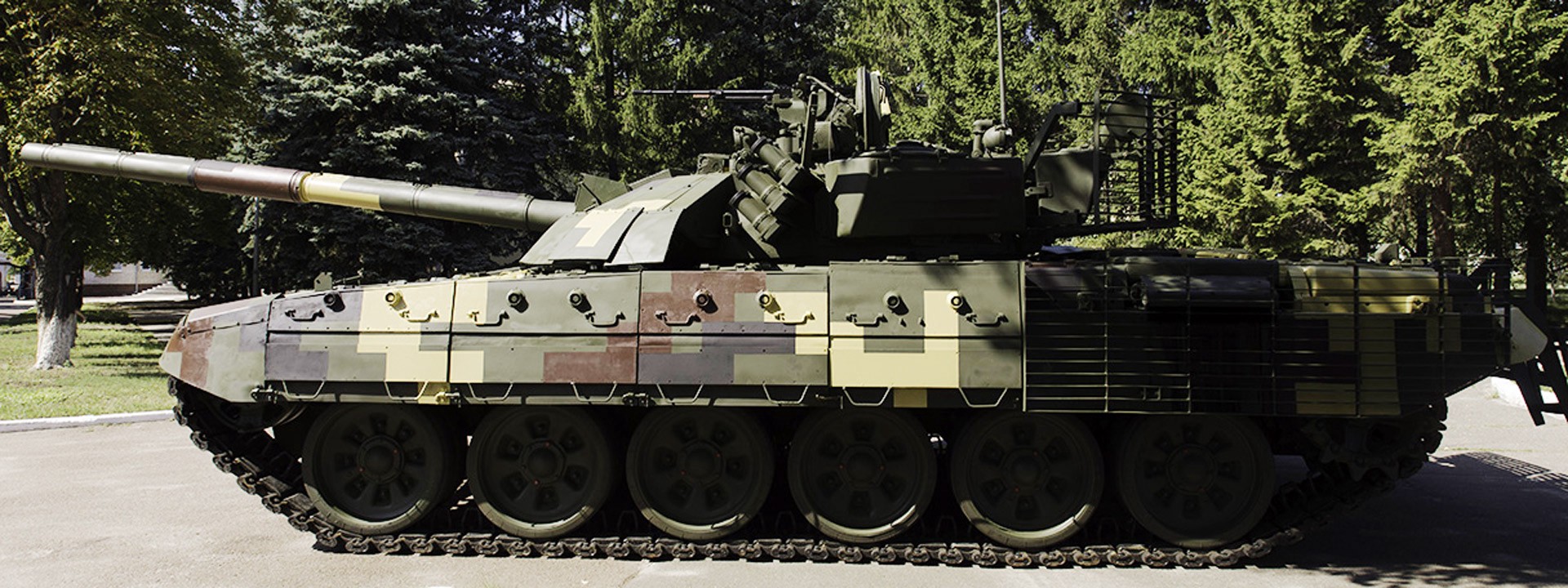Tanks for the Upgrade!
Ukrainian military modernization and the global armstrade
Tanks for the Upgrade!

Ukrainian military modernization and the global arms trade

[facebook url=”https://www.facebook.com/petroporoshenko/videos/1083147085153016/” /]
The T-72AMT is an upgraded version of the Soviet T-72 MBT featuring a 125mm gun, “Nizh” (“Knife”) explosive reactive armor, night vision and digital radio systems, satellite navigation equipment, and a rear view camera. Of note, the 125mm gun on the new model is of a larger calibre than permitted by the heavy weapons clause in the Minsk Agreements. While there have yet to be announcements that the T-72AMT will be used by the UAF in the conflict in eastern Ukraine, similar new tanks were ordered. Defense modernization has a dual purpose for domestic policy — to boost the local economy and to better equip the UAF.


On July 10, 2017, Poroshenko issued Decree No. 183, ordering the reallocation of funds to finance defense and national security projects. The decree modified the Ukrainian 2017 State Budget, allocating UAH 300 million (approximately USD 11.8 million) for the acquisition of newly upgraded, UkrOboronProm-produced T-84 Oplot-M (also “BM Oplot”) tanks. The T-84 Oplot-M has many similar features to the T-72AMT. For example, it also has a 125mm gun and “Nizh” explosive reactive armor. Thailand has already purchased 50 T-84 Oplot tanks, and there are rumors that Pakistan is in negotiations to order 100 tanks.

How did Ukraine, which is fighting a war of varying intensity in its eastern territories, manage to emerge as an exporter of heavy armor, and is this trend likely to continue?
As @DFRLab previously reported, the Ukrainian military has undertaken extensive modernization efforts since the outbreak of the conflict in 2014. Recent military modernization efforts are largely aimed at meeting NATO standards by 2020, while earlier plans focused on establishing a professional military to better serve in the Anti-Terrorist Operation (ATO) zone. In an announcement, UkrOboronProm stated that the “Ukrainian defense industry is developing and integrating into the global defense and security sector, and the vector of reforms for NATO integration is irreversible.”
Boom to bust … to boom?
Under the USSR, Ukraine was host to some 1,840 military enterprises and research centers, employing approximately 2.7 million people. In 1991, Ukraine inherited approximately 40 percent of the Soviet Union’s military personnel and equipment, including arms, supplies, and ammunition, not to mention the world’s third largest nuclear arsenal. Factories throughout Ukraine produced a variety of arms systems, including tanks, artillery, rockets, and missiles. After the fall of the Soviet Union, many of these industries went dormant as the country pushed ahead with a reduction plan in an attempt to forestall economic decline.

By the early 2000s, Ukraine was littered with ageing military equipment that served only as a tourist attraction. Factories such as this one in Kharkiv were long described as “tank cemeteries” or “parking lots” on Google Maps.

These photos from 2012 show innumerable abandoned tanks lining a former factory/tank cemetery in Kharkiv. As late as October 2016, Google Maps described the location as a “tourist attraction.”
However, after Russia illegally annexed Crimea and invaded eastern Ukraine, Ukraine’s domestic defense production found a new purpose. Long unused factories resumed production, reviving aged Soviet military systems. In addition to production, UkrOboronProm repairs tanks that return from the front lines of eastern Ukraine, and presumably has repaired many of the tanks in these “cemeteries.”
That includes the “cemetery” pictured above. Instead of a cemetery, the facility is now a tank repair plant, with individuals reporting that access to the facility is now restricted due to safety and security concerns; the Google Maps description of the same location now reads “manufacturer.”
This is just one of many facilities across Ukraine that held decommissioned tanks.
With an increased production of modern or upgraded weapons, Ukraine is slowly but surely entering the world’s arms market, as the deal with Thailand and the rumored deal with Pakistan suggest.
This trend is likely to continue. Ukraine badly needs to diversify its economy and sources of both foreign revenue and domestic employment. Given the facilities that it inherited from the Soviet Union, defense production and export is a logical field for it to enter.
UkrOboronProm recently announced that it increased weapons exports by 25 percent (amounting to USD 770 million) in the past year alone, in addition to fully supplying domestic defense forces with “everything necessary.” It reported that it supplied over 15,903 units of weapons and military equipment to the UAF from July 2014 to July 2017.
These new tanks are likely to signal only the beginning of Ukraine as a burgeoning defense producer.
Follow the latest Minsk II violations via the @DFRLab’s #MinskMonitor.

